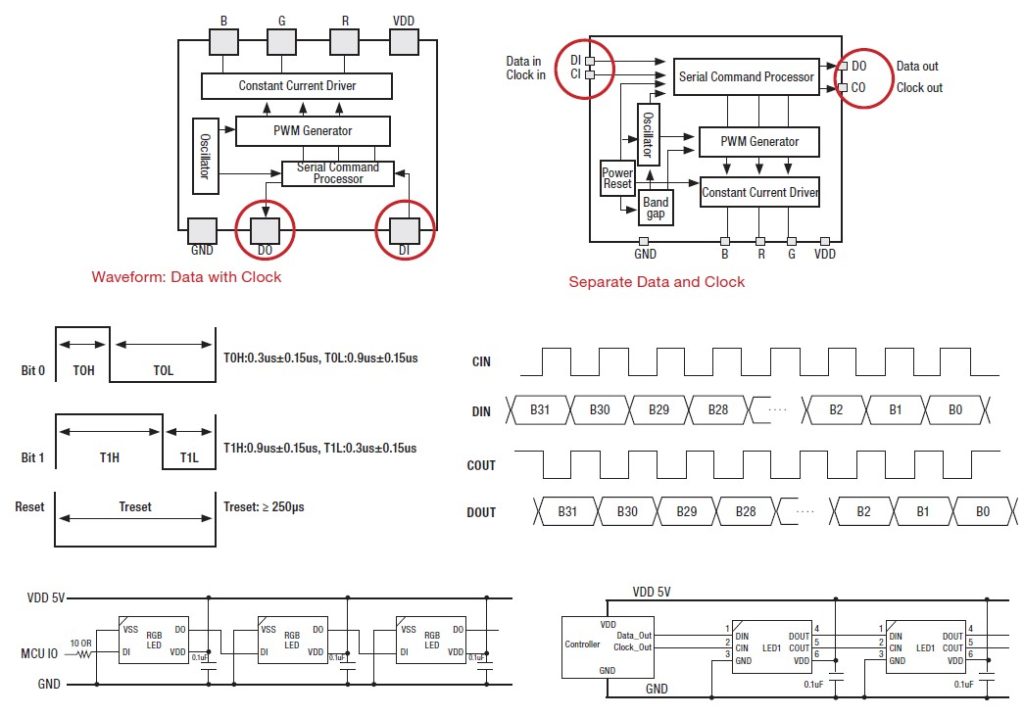This post is also available in: 繁體中文 (Chinese (Traditional))简体中文 (Chinese (Simplified))

Advantages of Addressable RGB LEDs with built-in integrated circuits (ICs)
Addressable RGB LEDs or Digital LEDs provide the user with controllability. Each one of the
individual LED chips can be programmed independently to create distinct colors, different
patterns, adjust brightness, and customized lighting effects. Addressable RGB LEDs can
produce a wide range of colors and uniform color from more concentrated CIE distribution.
Easier to use with pulse-width modulation (PWM) full color mixing, all colors are
controlled by code, not resistors. LEDs with embedded ICs help reduce costs in
engineering design of the hardware and software. Simplify the circuit design layout
because fewer electronic components are required. Shrink down module size due to less
space requirements.
Addressable RGB LEDs can be easily programmed and controlled using microcontrollers
and controller boards.
Addressable RGB LEDs are energy efficient and can be powered by batteries or lowvoltage
power supplies, making them suitable for portable and low-power applications.
Addressable RGB LEDs have a wide range of applications:
• Wearable Devices
• EV Charging Equipment
• Electronic Appliances
• Backlighting And Edge Lighting
• Automation Equipment
• Robot Indicator Light
• Entertainment, Casino, Gaming Applications
• Audio And Video Equipment
• LED Light Strips

Single-Wire vs Dual-Wire Addressable RGB LED
Single wire and dual wire addressable RGB LEDs are two different types of LED
technology used for controlling the color and lighting effects of individual LEDs.
Single wire addressable RGB LEDs use a single data wire to control the color and brightness
of each LED. These LEDs have an integrated microcontroller that interprets the data sent
through the data wire and adjusts the LED’s color accordingly. Single wire addressable LEDs
are commonly used in applications where simplicity and ease of use are important.
Dual wire addressable RGB LEDs use two separate wires for data and clock signals to
control the color and brightness of each LED. These LEDs have a built-in shift register
that allows for more precise control and synchronization of the LED colors. Dual wire
addressable LEDs are often used in applications where higher data transfer rates and
more advanced control capabilities are required.
Dual Wire as faster data transmission and longer serial connection compared to single
wire. Each LED with single wire takes 30μs to transfer from one led to another, while it
takes 1.9μs to transfer from one to another with dual wire.
Generally, human vision can spot a delay time over 30ms. Dual wire transmits data faster
and preferable for longer serial connection due to its much shorter delay time compared
to single wire.




